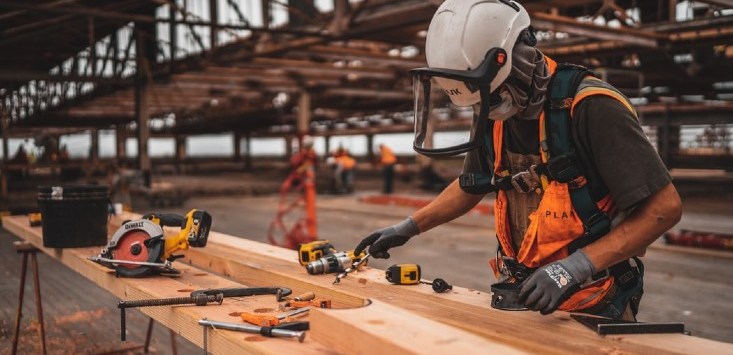
Small business owners in the construction industry have been left with no choice but to lift their rates as the rising cost of timber squeezes margins.
The latest figures from the Australian Bureau of Statistics (ABS) show the consumer price index rose 0.8% in the three months to September and core inflation hit its highest rate since 2015.
Rising fuel costs and new home purchasing costs driven by higher timber prices have contributed to the sudden increase in inflation.
Tyler Bowles, owner of HMS Projects in Sydney, says his suppliers have continuously had to increase the price of timber over recent months due to global supply chain issues and shortages.
The owner of the carpentry and building business, which specialises in pergolas, decks and apartment renovations, says builders have responded to higher input costs by increasing their rates or even turning to alternative materials like steel.
“It’s annoying because I’ve done a job for someone six months before and then I do a similar job for them later and it’s 20% to 30% more,” Bowles tells SmartCompany.
“We are definitely lifting prices to make it worthwhile,” he adds.
Bowles says the cost of internal framing timber, which is what most houses are built from, has dramatically risen.
“Builders are swapping to any alternatives they can to keep their projects on budget and on time because lead times for timber are just crazy,” he says.
Hardwood decking supplies such as merbau and spotted gum timber have also become more expensive, with prices jumping from $11 a linear metre to $16 in recent months.
Despite global supply chain issues driving the rise in construction input costs, Bowles doesn’t expect timber yards to reduce prices if those problems subside.
“I can’t see them changing prices again if it’s easier to get timber but it would depend on the timber yard,” he says.
The timber crunch facing the construction industry has contributed to a 3.3% increase in new home purchasing costs, according to the ABS.
But the main factor driving the recent rise in inflation was a significant 7.1% jump in fuel prices in the September quarter.
According to Harley Dale, chief economist at CreditorWatch, the ABS data indicates the Reserve Bank might raise interest rates sooner than expected.
Dale said the key take-out of the ABS’ release is that the inflation measures preferred by the Reserve Bank have jumped above 2%.
“The RBA’s inflation target is 2% to 3% and Australia hasn’t been in that shooting range since late 2015,” he said.
“This is leading to rumours that the RBA may raise interest rates sooner than expected.”



COMMENTS
SmartCompany is committed to hosting lively discussions. Help us keep the conversation useful, interesting and welcoming. We aim to publish comments quickly in the interest of promoting robust conversation, but we’re a small team and we deploy filters to protect against legal risk. Occasionally your comment may be held up while it is being reviewed, but we’re working as fast as we can to keep the conversation rolling.
The SmartCompany comment section is members-only content. Please subscribe to leave a comment.
The SmartCompany comment section is members-only content. Please login to leave a comment.